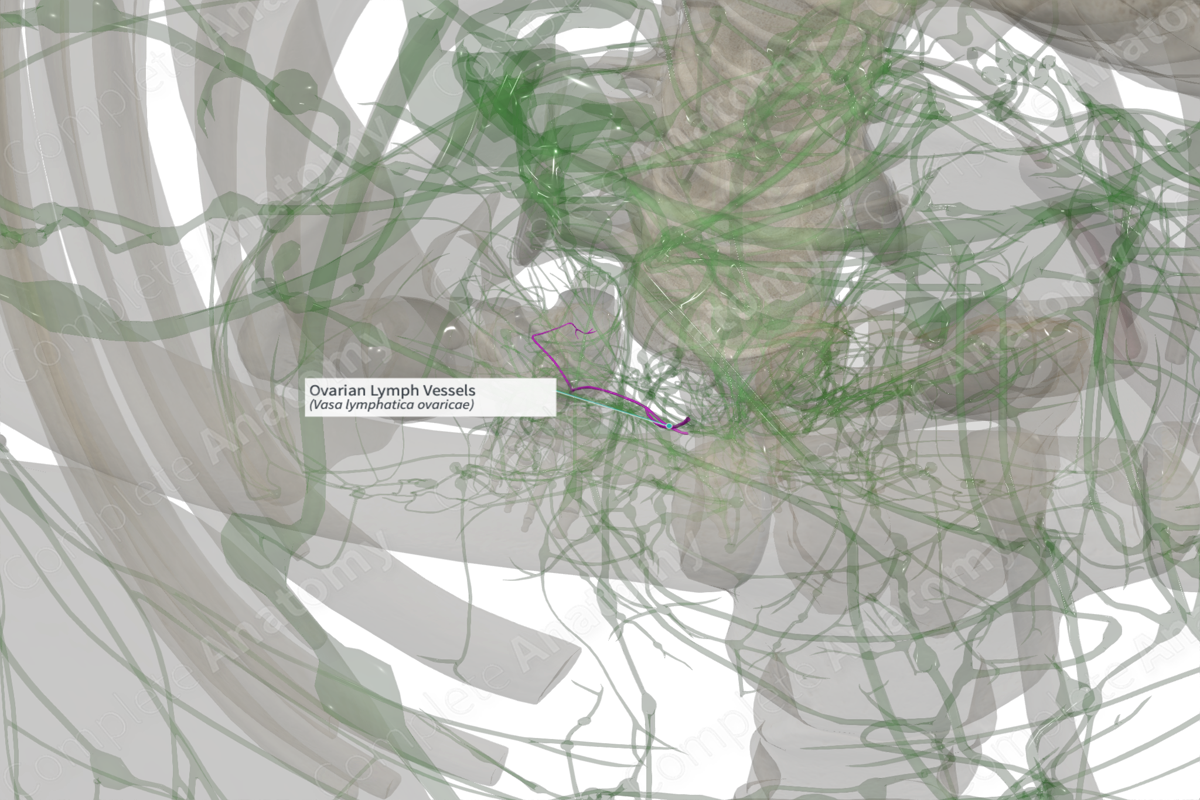
Quick Facts
Location: Arise in the cortex of the ovary and accompanies the ovarian arteries.
Drainage: Paranchyma of ovaries and fallopian tubes.
Direction of Flow:
Right side: Precaval & lateral caval nodes > right lumbar trunk > cisterna chyli > thoracic duct.
Left side: Preaortic and lateral aortic nodes > intestinal trunk and left lumbar trunk > cisterna chyli > thoracic duct.
Related parts of the anatomy
Description:
Description: (Location & Drainage)
The lymphatic vessels of the ovary arise as a dense network around the follicles and corpus luteum in the cortex of the ovary. As the vessels pass through the medulla, and towards the hilum of the ovary, the network transitions into 6–8 collector vessels that exit the ovary accompanied by the blood vessels (Földi et al., 2012).
The collecting vessels ascend with the ovarian artery. The ovarian lymph vessels on the right side drain into the precaval and lateral caval nodes that are located near the renal vein. On the left side, the lymph vessels terminate in the preaortic and lateral aortic nodes near the left renal vein (Földi et al., 2012).
References
Földi, M., Földi, E., Strößenreuther, R. and Kubik, S. (2012) Földi's Textbook of Lymphology: for Physicians and Lymphedema Therapists. Elsevier Health Sciences.
Description:
Description: (Location & Drainage)
The lymphatic vessels of the ovary arise as a dense network around the follicles and corpus luteum in the cortex of the ovary. As the vessels pass through the medulla, and towards the hilum of the ovary, the network transitions into 6–8 collector vessels that exit the ovary accompanied by the blood vessels (Földi et al., 2012).
The collecting vessels ascend with the ovarian artery. The ovarian lymph vessels on the right side drain into the precaval and lateral caval nodes that are located near the renal vein. On the left side, the lymph vessels terminate in the preaortic and lateral aortic nodes near the left renal vein (Földi et al., 2012).




